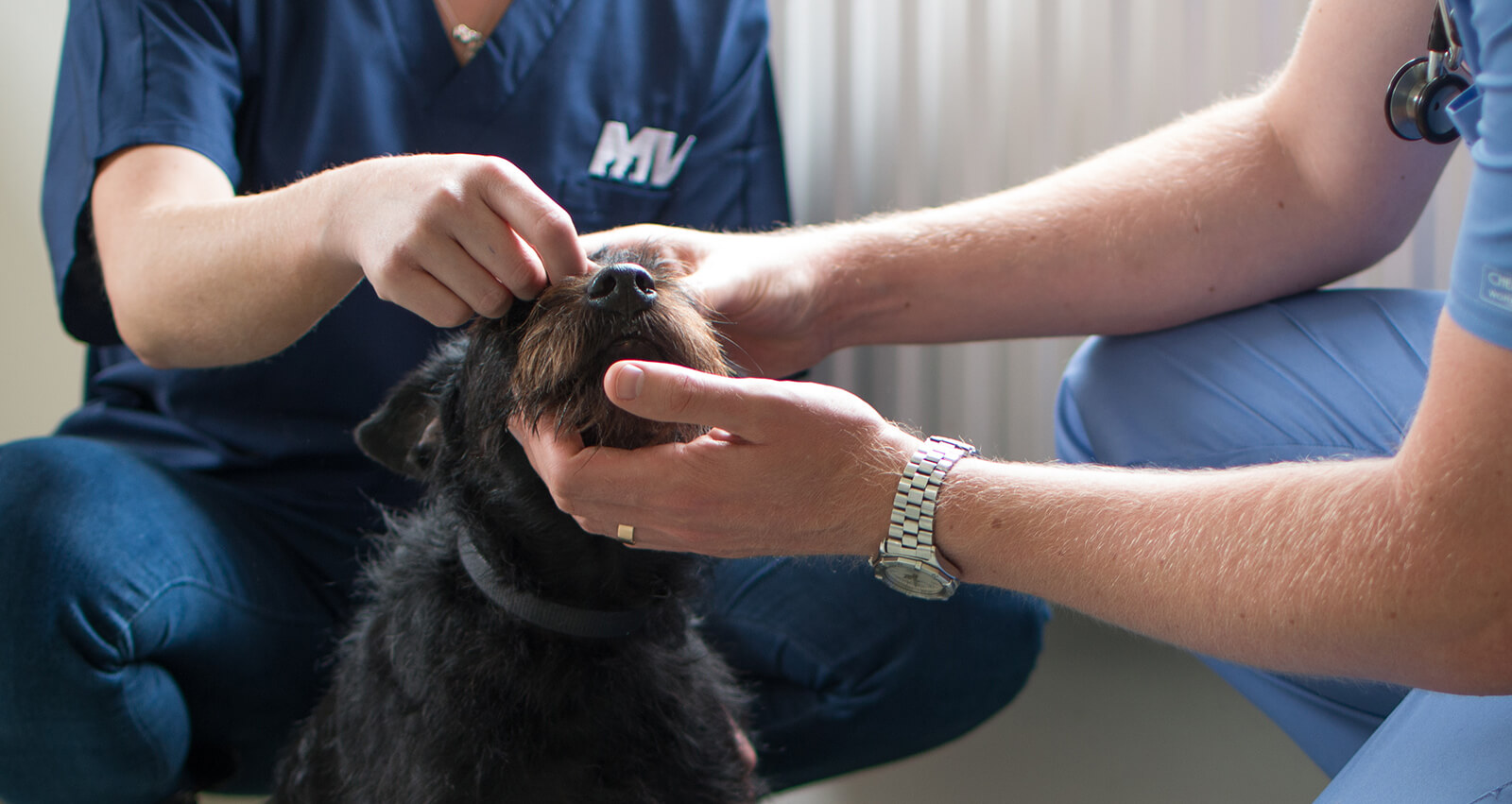
 Menu
Menu
Mandibular Fractures in Dogs

What is the mandible?
The mandible is the bone of the lower jaw of the dog. It is split into the right and left mandible. The teeth on the lower jaw all insert into the mandible. The two sides of the lower jaw are joined at the front at the mandibular symphysis.
How could mandibular fracture happen?
The most common cause of mandibular fracture is due to trauma such as in a road traffic collision or a dog running very fast into a hard surface. Dogs trying to eat something very hard could also cause a minor fracture if the bones are weak.
What are the signs?
In general the signs are: swelling in the area, a loss of symmetry of the lower jaw and potentially the loss of teeth in the affected region. The lower jaw may also droop on the affected side. A mandibular fracture will also be painful.
How is it diagnosed?
Most of the time a physical examination performed by the veterinary surgeon will be sufficient to diagnose a mandibular fracture, but further imaging via x-rays or a CT scanner will be necessary to confirm the extent of the fracture. In order to properly examine the extent of the fracture your dog may have to be anaesthetised in order to conduct a full assessment.
Treatment options
Treatment of mandibular fractures depends on the fracture that has occurred and the location of the fracture in the mandible.
Mandibular symphysis fractures
- Fractures of the mandibular symphysis can be treated with the use of a cerclage wire which is placed to align the bones
Fractures of the body of the mandible
- Muzzle fixation with a splint can be used if the bone is stable
- This only works if the canine teeth can occlude normally
- External skeletal fixation
- Pins are placed into the bone, through the skin and are held in place by a a connecting bar or block of acrylic on the outside
- Interdental wiring and acrylic splinting
- A wire is placed in between the teeth and a splint made from acrylic is placed along the fracture line. This is done to hold the areas of broken bone in place.
- Internal Fixation
- Bone plates and screws can be used to hold the bone ends together. Most dogs are of sufficient size to allow this technique to be considered.
Fractures of the vertical portion of the mandible
- Muzzle fixation is the preferred method of choice for fractures involving this area
- If a dog is large enough then bone plates and screws can also be used.
Postoperative management
Postoperative care for animals with jaw fractures will include a soft food/liquid diet for a significant period of time whilst the fracture is healing. In some cases, a food tube is placed into the oesophagus to assist feeding. Daily rinsing of the mouth may also be needed to ensure the mouth is kept clean.
Stay in touch
Follow us on social media and keep up to date with all the latest news from the Grove clinic.

